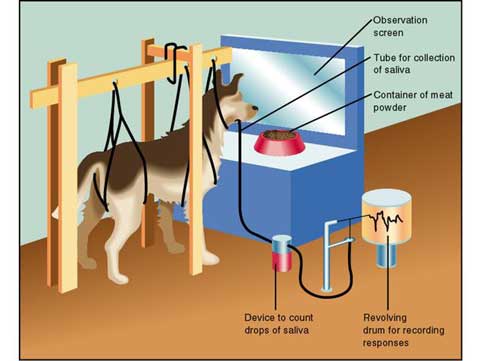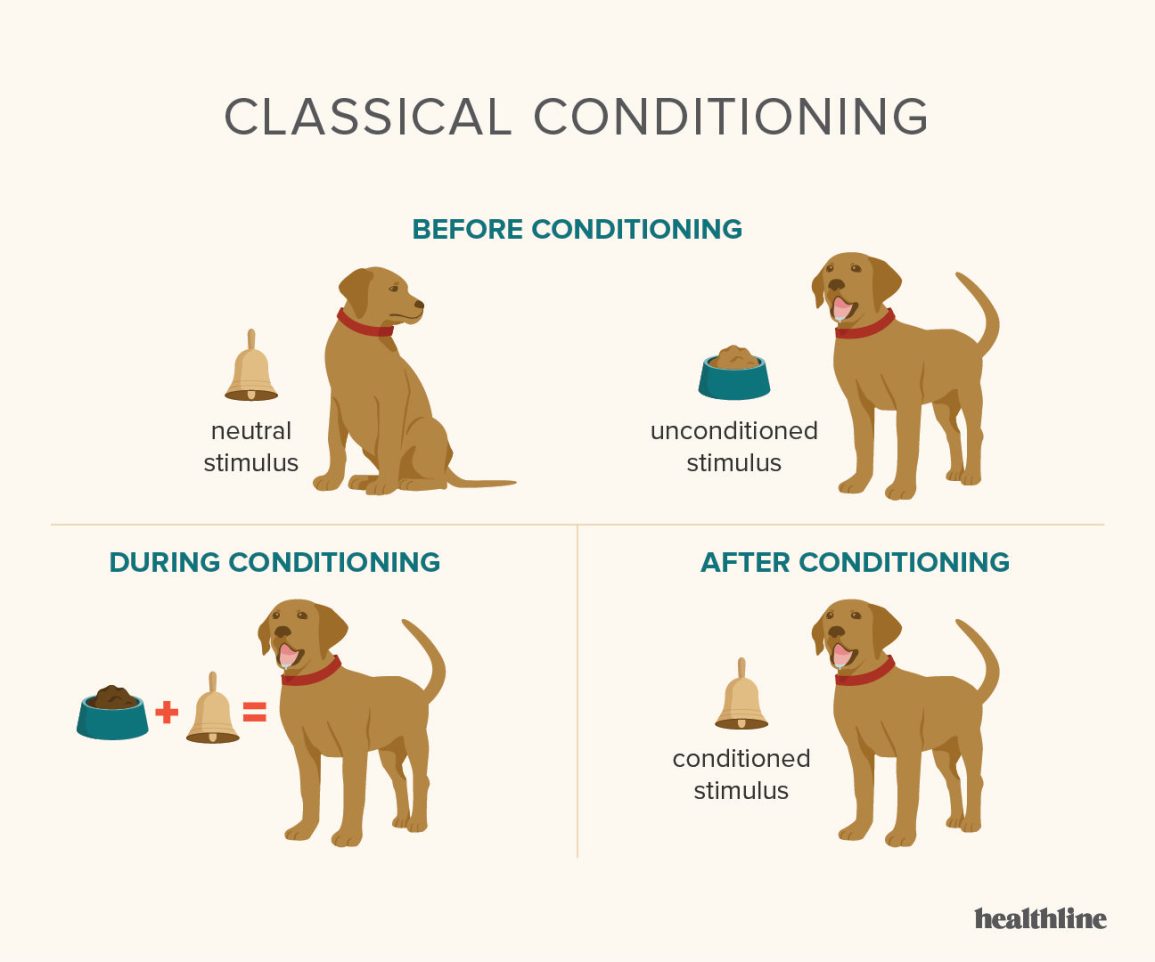- Log in to post comments
Let's dedicate one whole day to reading more about classical conditioning and the most groundbreaking experiment of all , PAVLOV'S EXPERIMENT.
Pavlov began to study Classical Conditioning at the age of fifty, and continued to study it for another thirty years. You can read more interesting facts about Pavlov here. Pavlov's famous Classical Conditioning experiment became one of the first learning theories and contributed to the notion of psychology as an objective science. Whilst measuring the salivation rates of dogs, he found that they would produce saliva even when they heard or smelt or saw food in anticipation of feeding.
To establish if there can be salivation with the pairing of a stimulus, Pavlov decided to use the bell as the Conditioned Stimulus, so-called because it was being paired with Food (US) to elicit salivation. Pavlov rang the bell, then fed the dogs'. After doing this repeatedly, the pairing of food and bell eventually established the dog's Conditioned Response of salivating to the sound of the bell.

After repeatedly doing this pairing over a period of time , Pavlov removed the food and when ringing this bell the dog would salivate without eve seeing the food . The key is that the food and bell have to be paired often enough, so that the dog could learn to associate the ringing of the bell with food.
After he made the sound without food numerous times, the dogs' produced less saliva as the conditioning underwent experimental extinction - a case of 'unlearning' the association which was made through the trials.

Some important terms associated with Classical conditioning that we should know about are -
1. Unconditioned stimulus - Food is the unconditioned stimulus in Pavlov’s dog experiment.
2. Unconditioned response - Response naturally occurs when you experience the unconditioned stimulus, such as salivating from the food.
3. Conditioned stimulus - This is considered a neutral stimulus. The bell before the food is the conditioned stimulus.
4. Conditioned response - This is the acquired response to the conditioned stimulus (the bell) So, the dogs salivated for the sound of the bell the same way they salivated for the food in front of them.
This was all of the important information about the experiment of classical conditioning given by Pavlov who moved from the field of theology into psychology! - Soumya Gulati
